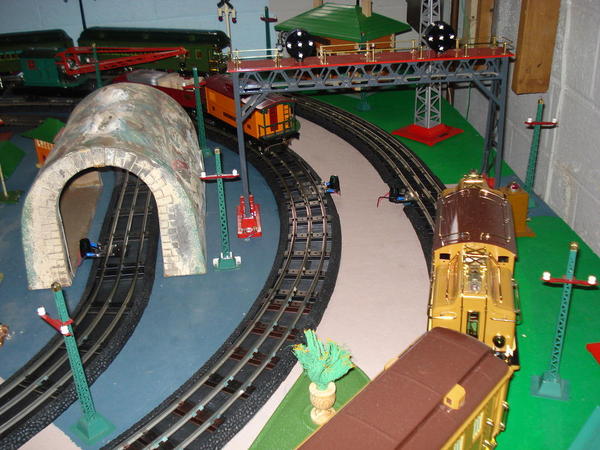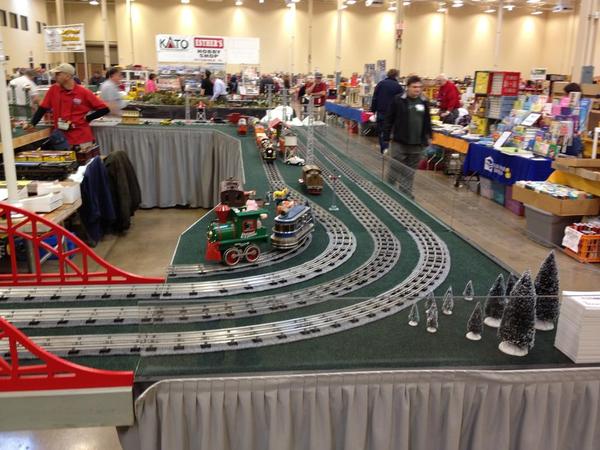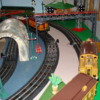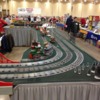Okay, for what it's worth:
On my layout I have all standard gauge tinplate sectional tubular track. There is a 72" horseshoe curve, composed of (8) sequential 72" curve pieces. Outside of that there is an 84"curve. This is composed of (4) 84" curve pieces, then a cut 3-1/2" straight piece at the curve apex, then another (4) 84" curve pieces.
At the apex of the curve (at the 3-1/2" straight piece) the center rails of the two tracks are 8" apart center to center. The center rails are also 8" apart at the far ends of the curves. Because as noted in posts above the 84" curves are not exactly concentric to the 72", on each side, equidistant from the 3-1/2" straight piece, halfway from the center to the far ends of the curves, the distance between the center rails bulges slightly to 8-1/2" center rail to center rail.
Given this setup, I put on the inside, 72" track, what I believe to be my locomotive with the biggest overhang, the new Super 381. On the outside 84" track, I placed my longest-wheelbase car, a state car, which should have my biggest underhang.
At the point on the curve where they come closest, there is 2-1/8" space between their closest points - the leading corner of the 381's cab swinging wide of the 72, and the center of the side of the Maryland state car cutting the corner of the 84.
I have made a tactical decision not to try to run my Brute, and not to buy the showroom cars. They are just too big for everything else on the layout. Even though my layout is around 30 x 38, I would have to redesign and rebuild everything and not use most of the accessories. Big is cool, but there is such a thing as too big, IMHO. So I have no data for you on the super big stuff.
Hope this is helpful.








